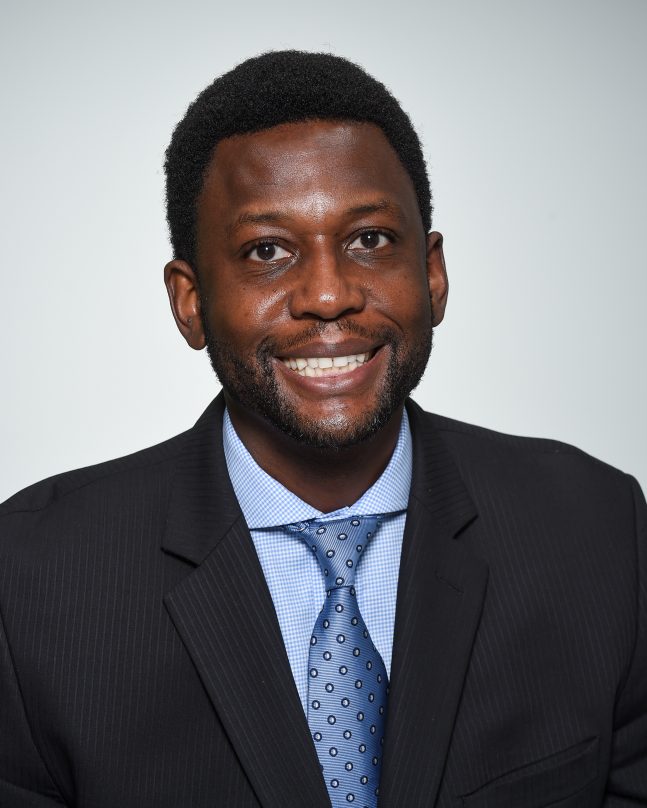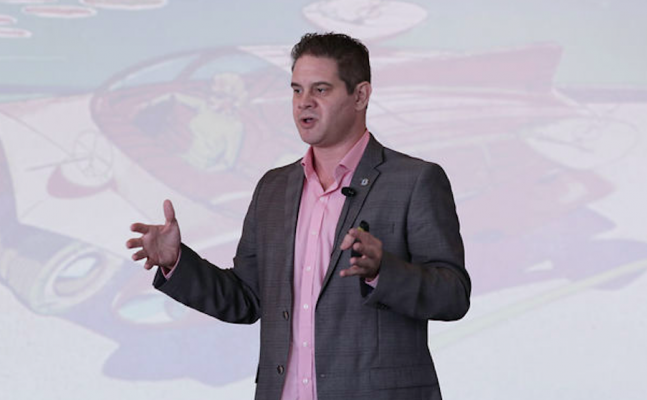
Photo: City internet. Image: Mikhail Rudenko | Dreamstime.com
Cities pledge to make connectivity a utility as COVID-19 exposes the digital divide
16 July 2020
by Sarah Wray
Estimates as to the size of the digital divide vary, with figures suggesting that anywhere from 21 million to 162 million citizens in the US lack access to broadband or connectivity of an adequate speed. What is clear is that the COVID-19 pandemic has laid bare like never before the fundamental impact this can have on people’s lives, as everything from education to work, shopping for essentials and even access to critical information and services has shifted online.
Tackling the digital divide is not new on the local government agenda but progress has been somewhat slow and – fittingly – patchy. Several North American cities on a recent Cities Today Institute roundtable shared how the pandemic is accelerating their plans to get all citizens connected, with many vowing to play a much more active role in the market.
As an initial measure, New York City, for instance, has distributed around 300,000 computers to school children, as well as 10,000 connected devices to low-income seniors living in New York City Housing Authority (NYCHA) public housing. To supplement this, a third party was contracted to provide support and coaching to these users.
“We’ve heard some wonderful testimonials from participants saying the programme is life-changing,” said John Paul Farmer, Chief Technology Officer, City of New York. “People can connect with their family or meet with their cardiologist without having to go on the subway or to an office to wait in line.”
Longer-term, though, New York is also looking at more fundamental changes, with some plans being fast-tracked in light of COVID-19. Farmer noted that 18 percent of New Yorkers don’t have access to either broadband or mobile internet.
“In 2019 New York, that’s a huge issue. Fast forward to 2020 in New York during COVID-19 and it’s a massive challenge that we have to address right away,” he said.
No red lines
Costs are a key factor as 46 percent of New York City households living in poverty do not have broadband in the home, with the Bronx having the highest percentage of residents without home broadband at almost 38 percent.
Farmer noted the current map of connectivity in NYC “unfortunately looks like a map of income levels across the city, and we know that maps of income levels look very much like a map of the racial disparities”.
“We cannot allow digital red-lining,” he said.
In January, the Mayor’s Office released its Internet Master Plan, laying out the city’s plan to take a bigger role in broadband delivery, including investing in infrastructure and partnering with the private sector to address gaps in the market.

It stated that: “Broadband may be as important to New York City in the 21st century as the subway or electricity was in the 20th century.”
The city will implement the plan through a Universal Solicitation for Broadband (USB) to gather proposals from the industry with a focus on covering areas of the city that currently lack connectivity, and will prioritise open access or neutral host infrastructure, which can be shared by multiple operators and uses existing assets such as public housing rooftops, firehouses, school buildings, light poles etc.
Following a rapid request for expressions (RFEI) which recently closed and represented the first phase of the USB, Mayor de Blasio announced this month that New York will make a “historic” US$157 million investment to accelerate broadband deployment in all five boroughs. This includes US$87 million redirected from the NYPD budget.
The RFEI sought to identify ready-to-deploy ideas or pilot projects that provide residents with internet access as soon as possible through licensing agreements to install on NYCHA property. The investment will extend new internet service options to 600,000 New Yorkers, with a target to reach 200,000 over the next 18 months.
Farmer says several “incredibly promising” responses were submitted and the city will move very quickly to implement the best ones.
As part of the plan, the city said it will work with minority- and women-owned service providers and community-based organisations to create a pipeline of jobs by training, certifying and employing adults and young people to install and operate network infrastructure.
Essential service
Toronto, too, is looking to take a more active role in its telecom infrastructure to ensure equitable roll-out. Lawrence Eta, Chief Technology Officer, City of Toronto, said he has been inspired by cities such as Chattanooga in Tennessee which provides government-led fibre connectivity through the Electric Power Board of Chattanooga (EPB). This delivers high-speed broadband across the city and has been credited with boosting the local economy.

Eta is championing a proposal for internet services to be treated as “a fundamental, essential utility service” to better protect residents and businesses in case of future pandemics or comparable events. Toronto is collaborating with other large cities in Canada to work with federal and provincial governments on regulatory policy and investment to help enable this.
A focus in Toronto is a shift towards a private-public partnership (P3) model which would see the municipality partnering with the private sector to build its own internet service. Eta envisions it as an “open access Toll highway”.
“This will present a broader role for public service to address underserved communities,” he said. “The city plans to take an active role so that we have access, affordability, resilience and equity.”
Eta agreed this would lead to “new conversations” with telecommunications operators and the private sector but said: “ I feel adamant that this is the role of government. We need to demonstrate a government leadership role in servicing the public.”
He noted that telecom providers had provided “excellent support” and donations to enable Wi-Fi in Toronto neighbourhoods during the pandemic crisis but that such donations are “not a sustainable model” for the long-term.
Toronto plans to take a collaborative approach with other cities on the proposed utility model, which Eta said would include reviewing the use of city assets to generate revenues and create new opportunities to address the financial challenges cities are experiencing.
“We’re looking at ways to generate revenue but, more importantly, at applying an equity lens,” Eta said.
Connected cities
The Californian city of Carlsbad is already well on its way to taking the reins with connectivity. David Graham, Chief Innovation Officer, Carlsbad, shared how it is achieving that.
Through the Connected Carlsbad strategy, the city is moving away from its previous approach of leasing space on third-party-owned telecom infrastructure to a city-managed digital network to reduce costs, ensure predictability and boost reliability, he said.
In 2017, Carlsbad amended an agreement with Crown Castle Fiber, giving the city access to dark fibre optic cable and in 2019, signed additional agreements with Crown Castle which will enable Carlsbad to operate a dedicated fibre network without the significant upfront investment of burying new cable. Graham said Carlsbad is now part-way through deploying the new fibre-optic network which will “deliver fast speeds and support a range of applications, from traffic management systems and utility infrastructure to internet services”.

Despite the inspiring examples, several smaller municipalities noted, though, that local regulations prevent them from providing internet services but many are pushing to change those laws to enable greater flexibility.
Refining the PPP
A common theme in cities’ plans is a focus on public-private partnerships, which will be more fundamental than ever with budgets severely under pressure.
Rana Sen, Managing Director, US Smart City Initiative Lead, Deloitte Consulting LLP, says this will place a new emphasis on making “the triple-helix model of collaboration” between the public sector, private sector, and academia and non-profits successful. Focusing on the value of initiatives is key, he said.
Sen explained: “When I say value, it’s not just the business value but also the impact that is being made on the constituents, and how the relationship between the private sector and the public sector can be sustained and enhanced over several years, where both parties stand to gain from the relationship.”
Sen urged cities to lay out a vision which includes a strong governance process. “Private sector partners are looking for that mature relationship because then they can see that they can serve the mission of the public sector agency and at the same time get appropriate returns from the investment that they make,” he said.
There are several innovative mechanisms cities can use, Sen said, pointing to a Deloitte report on inclusive smart cities.
San Jose’s US$24 million Digital Inclusion Fund, for example, which aims to close the digital divide, is supported by revenue from small cell usage fees paid by telecommunication companies to upgrade broadband networks, in addition to other public and private funding. Deloitte’s report also outlines how cities can leverage their purchasing power to incentivise service providers to address inclusion challenges. When issuing procurements, for instance, cities can require bidders to include considerations in their proposals such as how they will engage underserved communities, track inclusivity, and mitigate exclusionary practices.
“Many cities are using competitive procurement strategies to reduce broadband access gaps by mandating that providers offer affordable plans for low-income households,” the report notes.
Flipping orthodoxies
Joe Mariani, Research Manager, Center for Government Insights, Deloitte Services LP, said, too, that the pandemic has revealed several “orthodoxies” that are baked into government systems and that these can be “flipped” to help cities with their COVID-19 recovery and reducing inequality.
Several of these were discussed during the roundtable, including telecommuting becoming far more accepted for city workers, the realization that more government services can be provided digitally and an understanding that regulation and procurement processes can be delivered with greater agility.
“The process of addressing these orthodoxies is painful,” Mariani commented. “It’s like tearing off a band-aid, but it can be very useful as it can help uncover some areas where inequity was baked into processes and technology.”
Ripping off this ‘band-aid’ can also help cities become more resilient for the future. For example, Mariani noted the example of New York providing training as well as just devices to underserved communities.
“This shows it’s not just providing the connectivity or the tablets; it’s also understanding some of the other things that have gone into the previous orthodoxy that created the digital divide. It shows the importance of seeing issues such as the digital divide as not just technology issues but as far broader issues, and tackling them that way.”
Now, he said: “The challenge is keeping an eye on those trends and on the values that get baked into the new technology and new systems to make sure everything ends up in a more equitable place than where we started.”
Image: Mikhail Rudenko | Dreamstime.com











